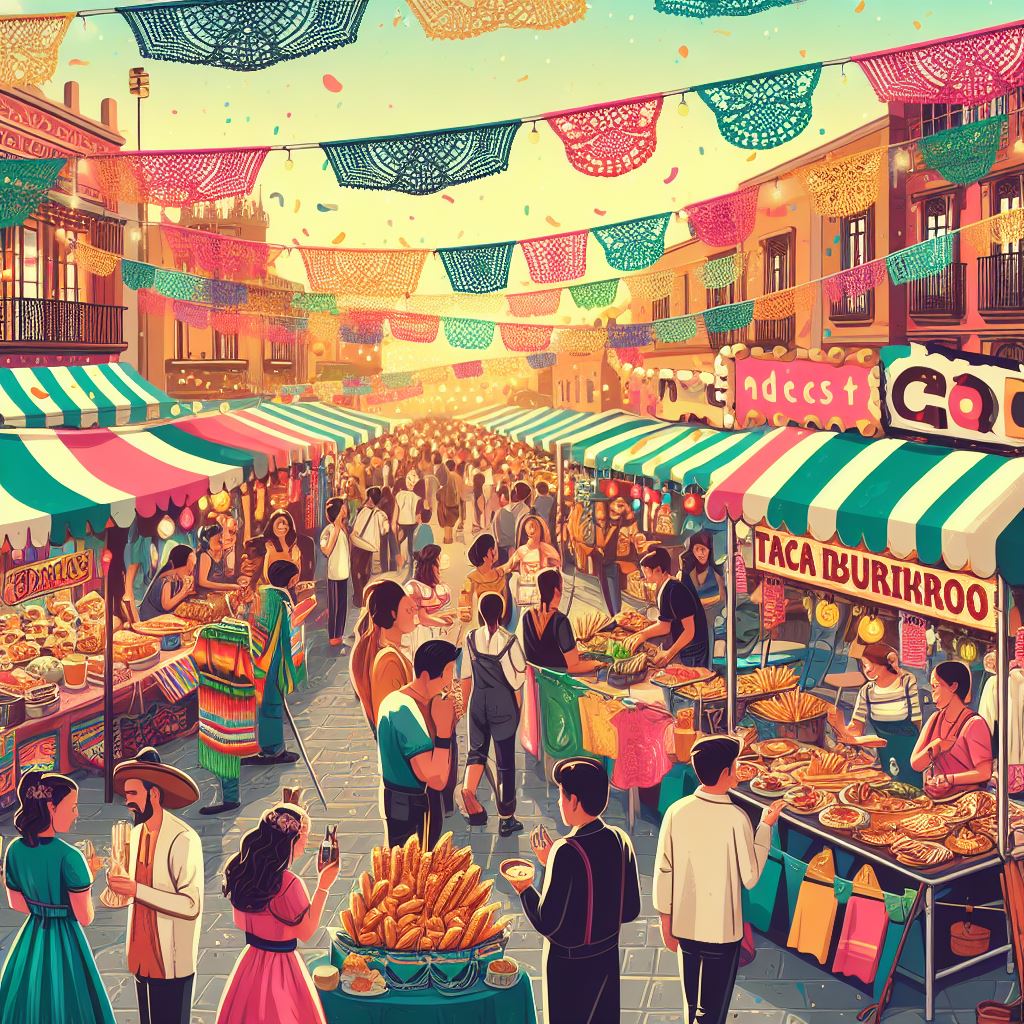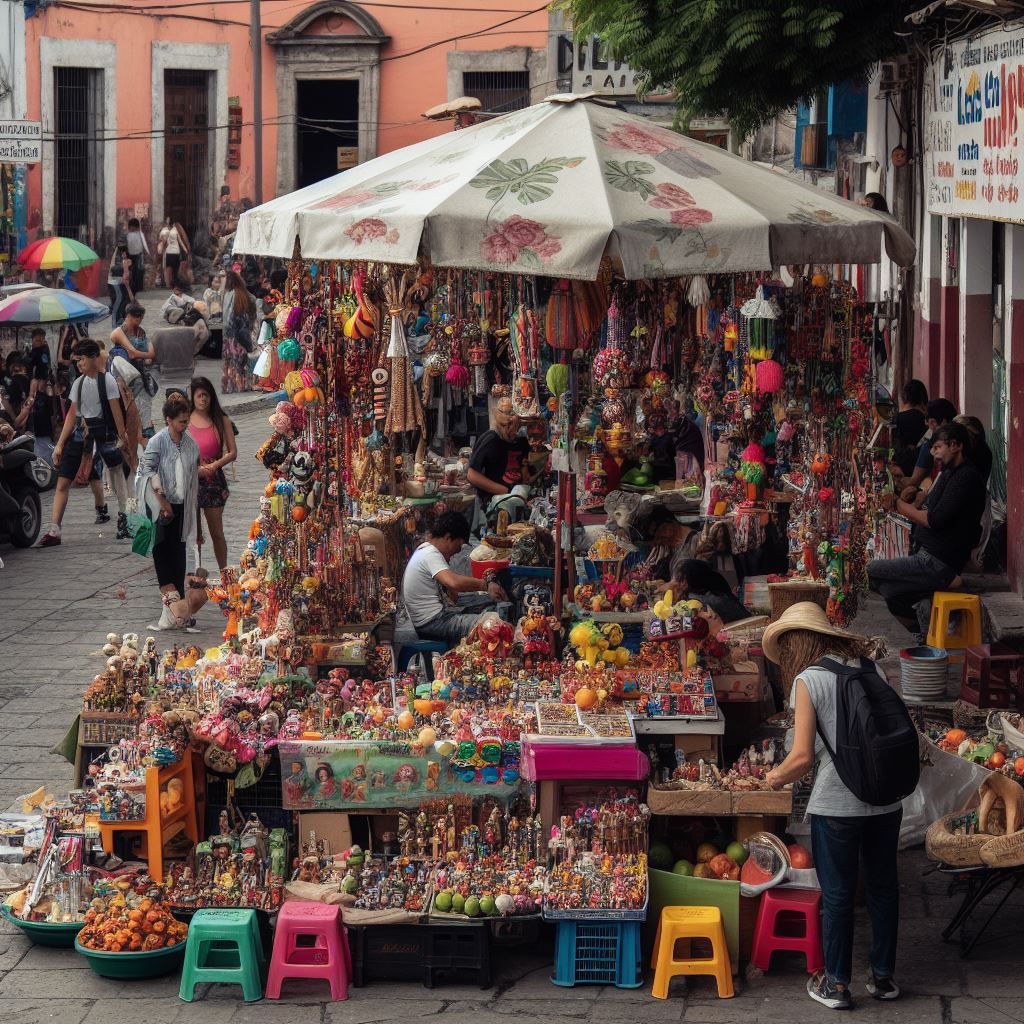Exploring the Vibrant Mexican Street Vendors: A Cultural Voyage
I have been fortunate enough to embark on numerous exciting trips to Mexico with both my family and friends. Exploring different parts of Mexico, we were constantly delighted by its rich cultural heritage, breathtaking landscapes, and warm-hearted people.
Thank you for reading this post, don't forget to subscribe!
One of many highlights of our Mexican adventures was undoubtedly the opportunity to immerse ourselves in the bustling street markets scattered across various cities, including Tijuana, Oaxaca, and Mexico City. Each time we strolled through the vibrant streets, an array of tantalizing aromas from the local street food vendors would permeate the air, instantly igniting our senses. The vibrant colors of the food stalls and the lively chatter of the vendors created an energetic atmosphere that was simply irresistible.
We eagerly indulged in a myriad of mouthwatering treats, such as the famous Tijuana-style tacos filled with succulent grilled meats and topped with zesty salsas, freshly made tlayudas from Oaxaca, packed with flavorsome ingredients like black beans, cheese, and avocado, or the tantalizing street corn coated in a savory mixture of mayonnaise, cheese, and chili powder, found in the bustling streets of Mexico City.
Beyond the culinary delights, these bustling markets also offered us an opportunity to explore the local handicrafts and immerse ourselves in the vibrant tapestry of Mexican culture. From intricately designed handmade textiles, such as embroidered blouses, to exquisitely painted ceramics and vibrant pieces of traditional artwork, the stalls were filled with treasures that showcased the country’s rich artistic heritage. Every piece seemed to tell a story, connecting us to the deep-rooted traditions and craftsmanship of the Mexican people.
In Tijuana, we found ourselves captivated by the colorful piñatas hanging from the stall roofs, while in Oaxaca, we marveled at the intricate patterns of the woven textiles created by skilled artisans. In Mexico City, the bustling markets offered an eclectic mix of contemporary and traditional artwork, including vibrant paintings depicting scenes from Mexican folklore, hand-carved wooden sculptures, and intricately beaded jewelry.
It was impossible to resist the allure of these unique and authentic handcrafted treasures, and we happily supported the local artisans by purchasing souvenirs that would forever remind us of these unforgettable trips. As we reminisce about our adventures exploring the vibrant streets of Tijuana, Oaxaca, and Mexico City, we are filled with gratitude for the unforgettable experiences we had with the local street vendors.
These encounters not only allowed us to satisfy our taste buds with the diverse flavors of Mexican street food but also provided us with a deeper understanding and appreciation of the country’s rich cultural heritage. Each visit to the bustling markets was like unwrapping a beautifully vibrant present, where every bite and every purchase became a piece of the Mexican story we were lucky enough to be a part of.
Immerse yourself in the vibrant culture of Mexico through a journey into the bustling world of its street vendors. Comprising an essential part of the country’s cultural fabric, these vendors offer an alluring array of goods, from sumptuous food to intricate handicrafts, against a backdrop of lively chatter and colorful displays.
This fascinating subculture thrives on tradition and entrepreneurial spirit, offering glimpses into everyday life that are as authentic as they are captivating. Join us as we delve into the captivating arena of street vendors in Mexico, an experience that is bound to stimulate all your senses and offer insights into the nation’s rich heritage and diversity.
Historical Story of Street Vendors in Mexico
Street vending has a long and rich tradition in Mexico, dating back to pre-hispanic times and the Aztec Empire when merchants traveled between villages to sell goods. This tradition continued in colonial cities, where street vendors were a common sight, offering everything from food to merchandise. In the 19th century, street vendors began to organize into guilds and were able to gain some legal recognition from the government.
Street vendors became an integral part of Mexican culture in the 20th century, with vendors of all types selling their wares in Mexico City’s bustling markets and streets. From food to crafts, street vendors offered a variety of goods to the public. However, in the 21st century, street vending in Mexico has been increasingly regulated, with some cities even banning street vendors altogether.
Despite these restrictions, street vending is still an important part of Mexican culture and continues to provide a source of income for many people. This is especially true in small towns and rural areas, where street vendors are the main source of goods and services. Street vendors may also offer unique merchandise that can only be found in certain areas, making them an important part of the local economy.
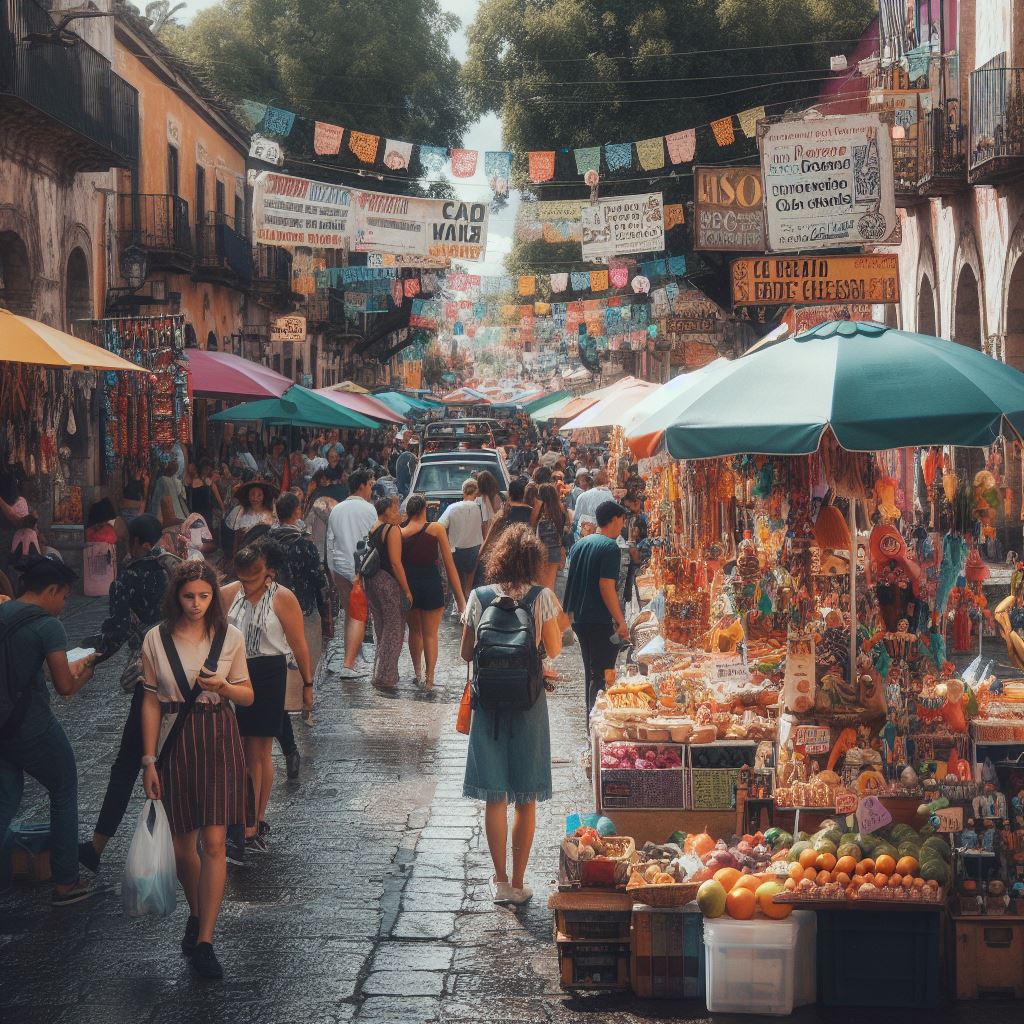
Street Vendors Classification: What Are Street Vendors Called in Mexico?
Street vendors in Mexico, also known as tianguis, are a common sight in cities and towns across the country, near metro entrances and on sidewalks offering a wide variety of goods and services. From the traditional fruits and vegetables, clothing, shoes, and jewelry, to handcrafted goods and snacks, these vendors provide an important source of income for many Mexicans.
Tianguis are typically held in the market square or main plaza buildings of a city or town every day or on a certain day of the week. While some vendors are stationary, many ambulantes, which means ‘walking’ in Spanish, are mobile, selling their goods from carts, wheelbarrows, bicycles, or simply carrying them in bags.
Street vending is a major source of income for many in Mexico, providing an array of goods at affordable prices. However, it is not without its challenges. Street vendors are often subject to harassment and extortion by local authorities, which can put them in a difficult financial situation.
Additionally, many vendors are not able to obtain the necessary permits and licenses to legally operate, which can lead to fines and other legal issues. Despite these challenges, street vending remains an important part of the Mexican economy and a vital source of income for many.
Mobile Markets and Tianguis (mercados sobre ruedas) Whats The Difference
Mexico’s vibrant street vendor culture is alive and well in the country’s bustling tianguis and mobile markets. Tianguis are traditional open-air markets that move from place to place regularly. Mobile markets are larger and more organized, with vendors selling a variety of goods from clothing to electronics. Alongside these larger markets, street vendors, or ambulantes, often set up shop in or around the markets, selling everything from snacks to handmade crafts.
The presence of these markets is an important economic opportunity for street vendors, allowing them to reach a wider audience and earn a steady income. Tianguis and mobile markets provide access to goods and services that might not otherwise be available and are a vital part of Mexico’s economy and culture. This traditional form of commerce is still going strong, with an estimated three million street vendors in Mexico, and the numbers are continuing to grow.
For those looking to experience the unique atmosphere of Mexico’s street vendors, tianguis and mobile markets are the perfect place to start. Whether you’re looking for traditional crafts, handmade items, or simply the chance to explore the vibrant culture of street vending, these markets offer a unique opportunity for travelers. So, if you’re planning a trip to Mexico, be sure to check out one of the country’s many
Where Are High-Density Areas Of Mexican Vendors Near Me
In Mexico, you will find the highest density of street vendors in bustling urban cities like Mexico City, Guadalajara, and Puebla. Within Mexico City, key areas with a concentrated number of street vendors include the historic center known as Zocalo, Tepito market, and La Merced neighborhood. Guadalajara’s downtown area, especially around San Juan de Dios Market, is filled with an array of street vendors as well.
Puebla is famous for its street food vendors, notably at the El Carmen Market. It’s worth mentioning that these vendors offer everything from food and beverages to handmade crafts and clothing, capturing the rich tapestry of Mexican culture and tradition in every sale.
Mexican Bazaars (plazas comerciales)
Mexico is known for its vibrant and colorful bazaars: bustling marketplaces filled with street vendors, selling all sorts of traditional Mexican goods. These bazaars are a popular destination for both locals and tourists alike, as they offer an opportunity to purchase unique items at an affordable price.
Bazaars in Mexico are often located in small towns and villages, where there is a limited number of businesses. Street vendors set up stands near metro stations with high concentrations of people to sell their goods, including fresh produce, hand-crafted items, and other traditional Mexican goods. Shopping at bazaars is a unique experience, as shoppers can bargain for the best prices and find a variety of goods that may not be available elsewhere in public spaces.
Street vendors at bazaars provide a valuable service to their local community, as they are often the only source of goods for those living in rural areas. By shopping from these vendors, visitors are helping to spread the wealth to those who may not have access to other forms of commerce. Shopping at bazaars is also a great way to support local businesses and help the economy.
Top 10 Best Street Vendors In Mexico City, CDMX
Taquería Los Cocuyos – Mexico Gift Card Vendor
Esquites Lázaro Cárdenas
Tacos Los Juanes
Jenni’s Street Quesadillas
La Esquina del Chilaquil
Taquería Tlaquepaque
Tacos El Güero
Esquites Moliere
Tianguis de los viernes en la Condesa
Taqueria Miranda
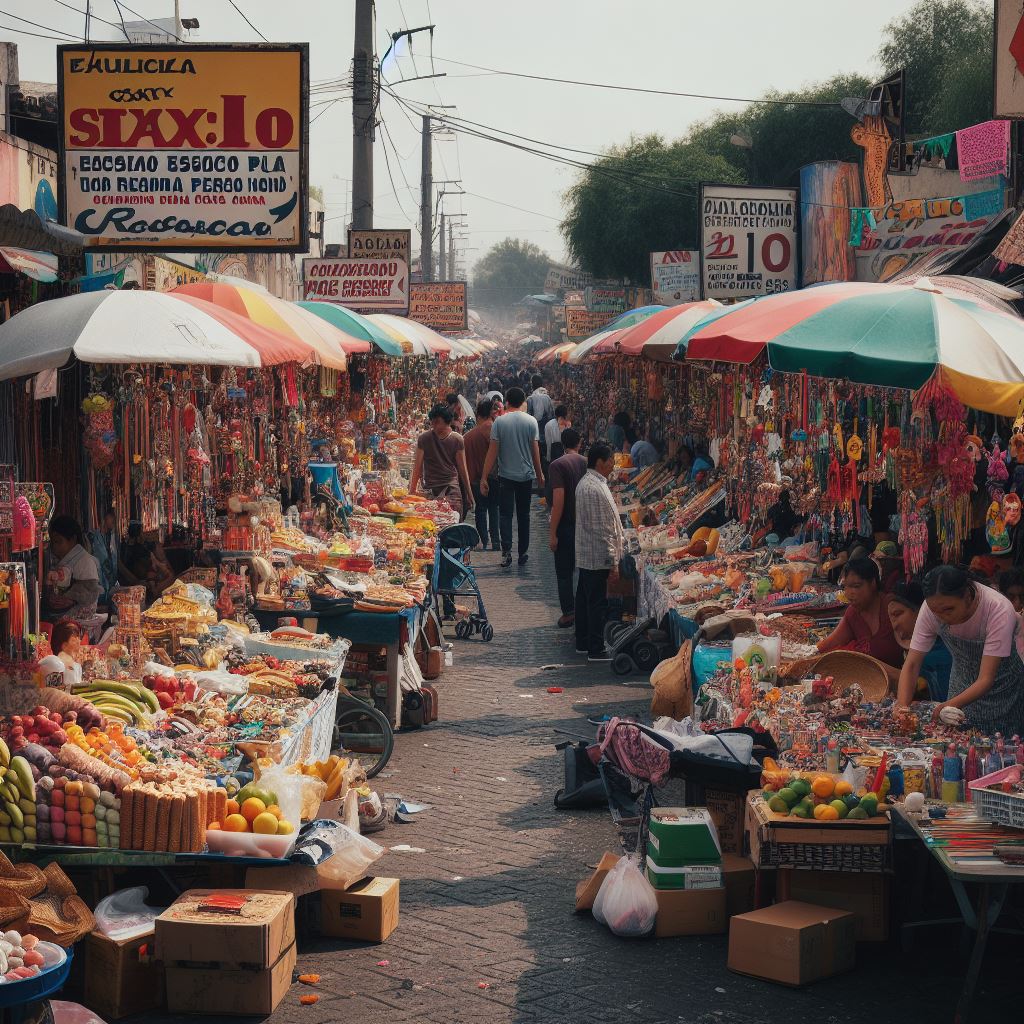
Is Mexican Street Food Safe?
Street food in Mexico is a popular and affordable way to enjoy a delicious meal. However, it’s important to make sure that the food is safe to eat. Fortunately, street vendors in Mexico are generally known for their cleanliness and quality of ingredients. Vendors typically prepare food in small groups, using fresh ingredients, which helps to ensure the food is safe to eat.
In addition, street vendors in Mexico are also required to maintain a certain level of hygiene and cleanliness, which helps to reduce the risk of foodborne illnesses. Furthermore, street vendors in Mexico are also subject to regular inspections, which helps to ensure that their food is safe for consumption.
Street vendors in Mexico often take extra steps to ensure the safety of their food, such as only serving pre-cooked dishes or using bottled water for cooking. Finally, the best way to ensure the safety of street food in Mexico is to look for vendors with good reputations from other customers. By taking the time to research the vendors and their food, you can ensure that you are getting a safe and delicious street food experience in Mexico.
Red Flags to Avoid from Street Food Vendors in Mexico
Street vendors in Mexico are a great way to experience local cuisine and culture, but certain safety precautions should be taken before making a purchase. Unlicensed vendors are a common sight, and it is important to be wary of these vendors as they may not meet health and safety standards.
- You should also avoid vendors that are not cooking the food right in front of you, as this could mean that the food is not freshly cooked.
- Additionally, make sure that the food is served hot to ensure it has been cooked properly.
- Furthermore, look out for signs of uncleanliness, such as food residue on the vendor’s surfaces and utensils. It is also important to make sure the vendor has a handwashing station nearby.
- Finally, if you see any pests, such as insects or rodents in the vicinity, it is best to avoid the vendor.
Taking these safety measures can help you enjoy street food in Mexico while avoiding any potential health risks.
Bucket List Of Street Foods in Mexico
- Antojitos
- Birria
- Camotes
- Chicharrónes
- Churros
- Elotes and esquites
- Flautas
- Huaraches
- Licuados
- Raspad
- Sopes/Gorditas
- Tacos
- Tamales
- Tlacoyo
- Tortas
- Tostadas
- Quesadillas
Antojitos
Diving deeper into Mexico’s vibrant street food scene, we cannot fail to mention the popular Quesadillas Antojitos. This delightful snack is a staple offering among Mexico’s bustling street vendors, providing an enticing burst of traditional flavors. Street quesadillas redefine authentic Mexican cuisine by serving it in its most unpretentious and tantalizing form. Typically filled with cheese and an assortment of toppings such as mushrooms, spinach, chorizo, or delicious poblano peppers, these quintessential roasted tortillas embody the essence of daily Mexican gastronomy.
You will undoubtedly relish every bite of Quesadillas Antojitos, an absolute must-try when exploring the rich culinary pavements of Mexico. The tasteful combination of simplicity and satisfaction found in these quite literally “little cravings” represents a staple in Mexico’s street food culture that both locals and tourists continually savor. So, when in Mexico, immerse yourself in the local culture by enjoying a mouth-watering Quesadilla Antojito from a nearby street vendor!
Tacos
Mexico is known for its delicious culinary delights, with street vendors offering an array of tasty treats. One of the most popular dishes served by these vendors is the taco. Tacos are a great way to sample the flavors of Mexico while enjoying a delicious meal on the go.
Tacos are typically served on a corn or flour tortilla and filled with a variety of ingredients, including meats, beans, vegetables, and sauces. Street vendors in Mexico offer delicious tacos with a variety of toppings, including fresh cilantro, onions, and sauces. To add flavor and spice, street vendors in Mexico often serve tacos with a variety of salsas and hot sauces.
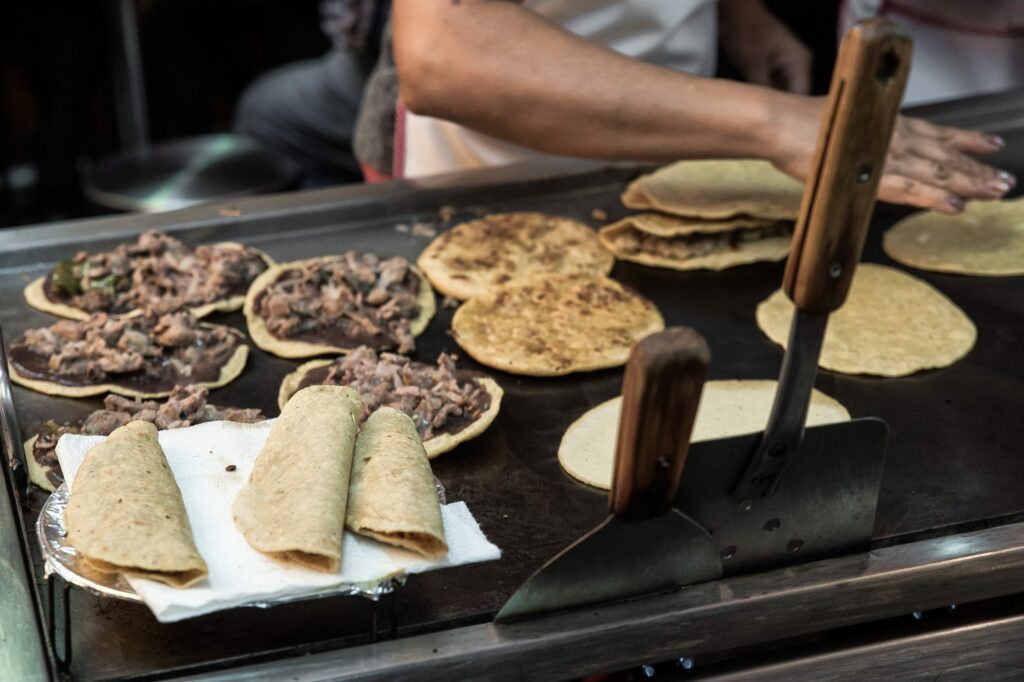
Tamales
Tamales are one of the most beloved and traditional Mexican dishes, usually served during holidays and special occasions. The traditional tamale is made with a masa (corn flour) dough, that is filled with a savory or sweet filling, wrapped in a corn husk or banana leaf, and then steamed.
Street vendors in Mexico offer a variety of tamales, including vegetarian or vegan options, with fillings such as rajas (roasted poblano peppers), chilorio (shredded pork in a chili sauce), and requesón (ricotta cheese). Tamales are often served with salsa, guacamole, and/or refried beans for a complete meal. Street vendors in Mexico make tamales with fresh ingredients, so they are often a quick and delicious way to get a meal on the go.
Tortas
A Torta is a Mexican-style sandwich, usually filled with meats, cheese, avocado, tomatoes, onions, peppers, and other tasty ingredients. These sandwiches are served on bolillo rolls, a Mexican-style crusty roll, and are often topped with lettuce, salsa, and lime juice. Tortas are a convenient and affordable snack for people on the go in Mexico and are often found in markets, plazas, and other public places.
Tortas are an important part of Mexican street food culture and can be found in a variety of styles and flavors. People in Mexico have been enjoying these delicious sandwiches for centuries, and they are still a popular staple of Mexican street food. Whether you’re looking for a quick bite to eat or a unique culinary experience, you can find it in a Torta.
Sopes and Gorditas
Sopes and gorditas are two of the most popular street food vendors found in Mexico. Sopes are a small, thick, fried corn patty topped with refried beans, cheese, lettuce, sour cream, salsa, and other toppings. Gorditas are thicker than sopes and are made with fried corn masa stuffed with a variety of fillings, such as chicken, pork, cheese, beans, and more. Both sopes and gorditas are typically served with a variety of sauces and accompaniments, such as pickled onions, cilantro, and lime.
Tostadas
Street vendors have long been a part of the Mexican culture, and one of the most popular snacks they sell is tostadas. Tostadas are crisp, deep-fried tortillas topped with a variety of ingredients such as beans, cheese, lettuce, tomatoes, and meats. This classic Mexican street food is a popular way to enjoy a quick, inexpensive meal.
Tostadas can be topped with ceviche, a seafood dish made with raw fish, onions, and lime juice; cochinita pibil, a slow-roasted pork dish; and tinga de pollo, a chicken dish. Toppings may also include guacamole, crema, and salsa. Many street vendors offer a variety of tostadas with different toppings, so customers can mix and match to create their unique dish.
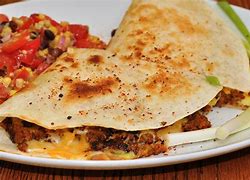
Quesadillas
Quesadillas are one of the most beloved Mexican street foods. Made with a thin, unleavened tortilla filled with cheese, vegetables, and other ingredients, they can be found at street vendors throughout Mexico. Quesadillas are typically cooked on a comal (a flat griddle) over an open flame or wood-burning stove. The filling ingredients vary depending on the region, but they may include cheese, potatoes, chorizo, mushrooms, and even grilled meats. To make the quesadillas even more satisfying, they are often served with salsa, guacamole, and other toppings.
Churros
If you’re looking for the perfect Mexican street vendor treat, look no further than churros! Originating in Spain, churros are elongated doughnuts that are fried and sprinkled with a sweet mixture of cinnamon and sugar. These treats are usually served hot and are a great snack for breakfast or a quick bite on the go. Churros are commonly found at street vendors in Mexico and can be purchased for a few pesos.
Licuados
These Mexican blended beverages are often compared to American smoothies. Combining fresh fruits, sugar, and milk or yogurt, Licuados are not only delicious but also an excellent way to beat Mexico’s tropical heat.
Typically served in tall, frosted glasses, these drinks are a common sight along the vibrant and bustling Mexican streets. Whether you prefer the classic strawberry Licuado or adventurous flavors like guava and cactus fruit, you’ll certainly find a Licuado that perfectly suits your palate when exploring the culinary landscape of Mexico’s streets.
Chicharrónes
These delicious deep-fried pork skins are a savory sensation you should not miss out on. Often served in small, bite-sized pieces, Chicharrónes has a distinctive crunch that pairs perfectly with a variety of toppings, including salsa, lime juice, and chili powder. The vendors who sell Chicharrónes are experts in their craft, meticulously frying each piece until it reaches its peak in both flavor and texture.
Raspados
These mouth-watering Mexican-style shaved ice drinks are a hit during the hot summer months. Sold by local vendors typically from brightly-colored pushcarts, Raspados come in a variety of flavors, ranging from tangy tamarind to succulent strawberry. Raspados aren’t just another beverage; they’re a deliciously sweet note in the symphony that is Mexican street food.
Birria
A stewed meat delicacy often served on special occasions. Originating from the western state of Jalisco, Birria is rapidly becoming a global sensation, gracing the menus of street vendors all over the nation. Rich, flavorful, and undeniably satisfying, this Mexican street food showcases a blend of slow-cooked meats, typically goat or beef, bathed in a delectable, fiery adobo sauce. The succulent meat is then typically served in taco form, generously garnished with fresh coriander and onion.
Huaraches
Named after the traditional Mexican sandal due to their elongated shape, huaraches are mouth-watering corn masa bases generously topped with flavorful refried beans, salsa, onions, potato, cilantro, and any kind of meat, collectively making it an irresistible delicacy. This authentic Mexican dish is a testament to Mexico’s rich culinary heritage. From sizzling street-side stands in bustling Mexico City to the tranquil, culinary-gifted villages in Oaxaca, huaraches found at the heart of Mexican cuisine will undeniably tantalize your taste buds.
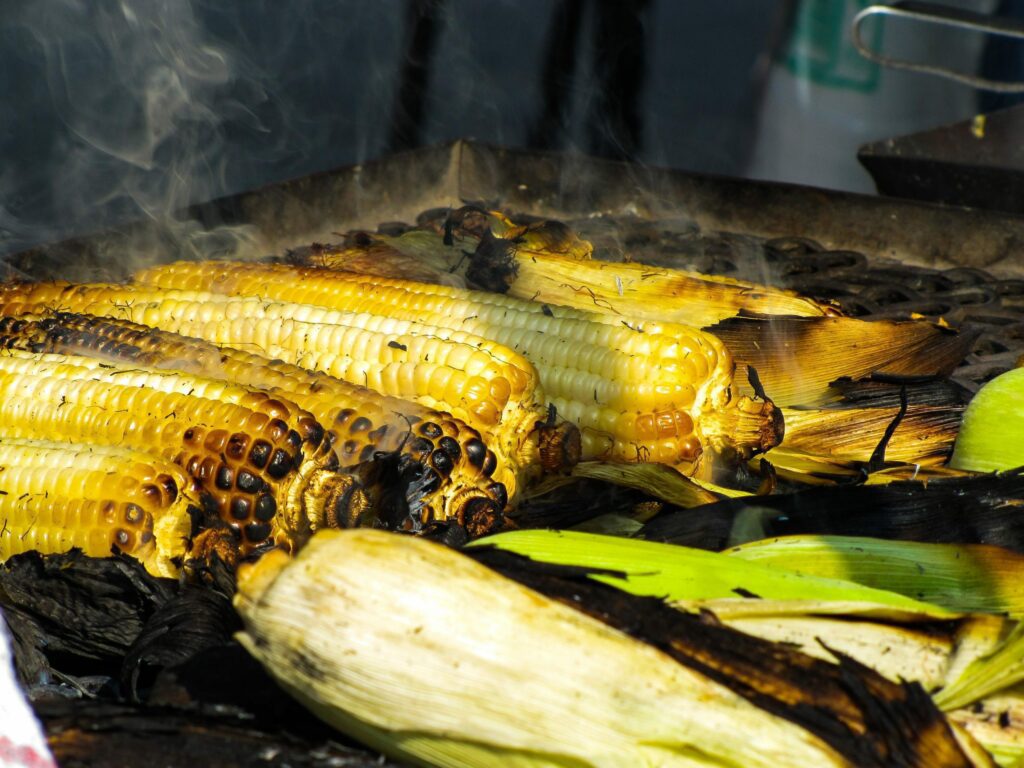
Tlacoyo
One of the most popular Mexican street food, sold by street vendors all across Mexico, is the Tlacoyo. Traditionally consumed since the time of the Ancient Aztecs, this mesmerizing delicacy represents the heart of Mexican street cuisine. Tlacoyo is a hand-shaped corn dough delight, usually stuffed with beans, cheese, or fava. This tantalizing snack is handed over with a generous sprinkle of salsa, cactus, and crumbled cheese on top.
Vendors skillfully pat, flip, and cook the Tlacoyos on large griddles, turning raw ingredients into a comforting meal for hungry wanderers. From busy urban corners to small-town markets, Tlacoyos are found everywhere, making them a must-try for anyone seeking the true taste of Mexican street food. Whether you’re in Mexico City or traveling through Oaxaca, you’re never far from a cart selling these aromatic, delicious treats.
Flautas
These crispy, rolled tacos are typically filled with meat like shredded chicken or beef and served piping hot for an instant burst of flavor. Street vendors selling flautas are very popular, garnishing the dish with green or red sauce, topped generously with shredded lettuce, cream, and cheese. This Mexican dish isn’t just a local favorite — it’s fast becoming a worldwide sensation. Perfect for a quick snack or hearty meal, flautas encapsulate the richness of Mexican cuisine in an easy-to-consume package.
Camotes
Historically sold from traditional push carts called “Camoteros”, Camotes are a cherished street food dessert in Mexico. A simple yet satisfying treat, Camotes are essentially sweet potatoes drenched in a mixture of sugar and cinnamon for a delightful caramelization. The enchanting aroma filling the streets from these caramelized sweet potatoes is sure to draw you in.
Not only fulfilling for the sweet tooth, Camotes also showcases the creativity and simplicity of Mexican street food culture. Next time you visit Mexico, make sure to have this iconic street vendor delicacy on your food exploration list!
Elotes and esquites
In Mexican culture, street food packs a punch when it comes to a delightful mix of taste and tradition. Dominating this vibrant scene are the beloved Elotes and Esquites. Elotes are grilled corn on the cob smothered in a tangy mix of mayo, chili powder, and cheese, served piping hot on a stick for easy eating.
Esquites, on the other hand, are essentially elote in a cup: kernels sliced off the cob, mixed with the same mouth-watering ingredients, and ready to be eaten with a spoon. A classic street food staple in Mexican cuisine, these delicacies can be found on almost every corner of Mexico’s bustling vendor-lined streets.
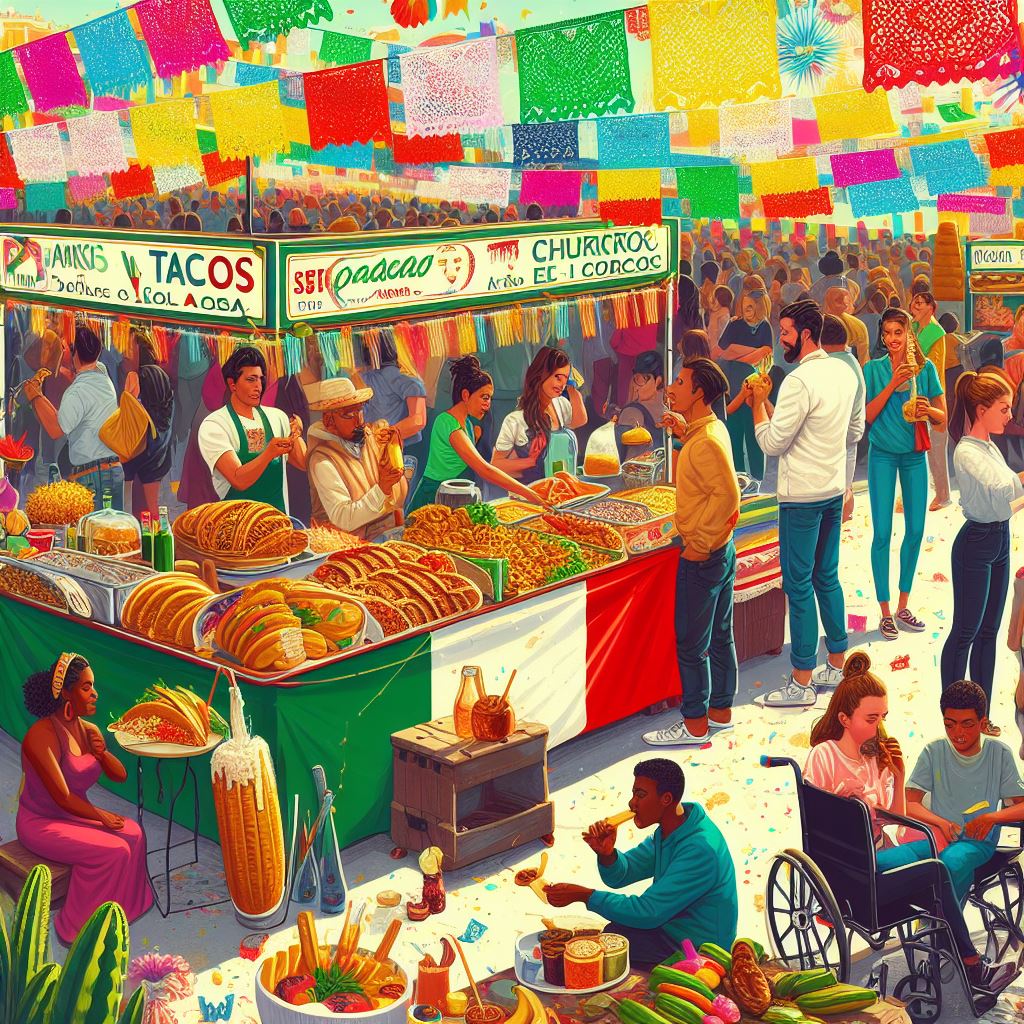
FAQs about Street Vendors in Mexico
1. Who are street vendors in Mexico?
Street vendors in Mexico, known locally as ‘vendedores ambulantes,’ are an integral part of the cultural landscape. From bustling city centers to quiet rural lanes, these hardworking individuals set up their stalls or tricycles, selling everything from tempting snacks, like elotes (grilled corn) and churros, to practical items such as clothing, accessories, and crafts. They not only provide a means of local economic activity but also serve as a vibrant testimony of Mexico’s rich traditions and culinary prowess. Despite facing challenges such as lack of official recognition and limited resources, Mexico’s street vendors persevere, epitomizing the country’s resilient entrepreneurial spirit.
2. What types of goods or food are commonly sold by street vendors in Mexico?
Street vendors in Mexico, colloquially referred to as “vendedores ambulantes” are renowned for selling a wide range of goods and particularly for their diverse food offerings. From traditional Mexican food items such as tacos, tamales, and elotes (grilled corn on the cob) to fresh fruits, churros, and aguas frescas (refreshing fruit drinks), the culinary selection is incredible. Besides the delectable street food, you can find vendors selling items like local handicrafts, children’s toys, clothing, and even household necessities. Each vendor in Mexico contributes to a vibrant, bustling marketplace that showcases the rich array of Mexican artisanal products and cuisine.
3. What is the economic impact of street vending in Mexico?
The economic influence of street vending in Mexico is substantial, contributing significantly to the nation’s informal economy. Street vendors, or “vendedores ambulantes,” represent a significant part of Mexico’s workforce, providing affordable goods and services, and generating many jobs that help to sustain local economies. Estimates suggest that around 60% of Mexico’s labor force is involved in this informal sector, highlighting its crucial role. Hence, street vending in Mexico isn’t merely a cultural aspect, but also a vital economic pillar that supports income dispersion and aids in poverty alleviation. Despite the challenges posed by a lack of regulation and formal recognition, street vending remains an important socioeconomic activity in Mexico.
4. Are street vendors in Mexico regulated by the government?
Yes, street vendors in Mexico are regulated by the government, but the enforcement of these regulations varies across different regions. The Mexican government has a set of rules and requirements for street vendors, such as obtaining a permit, keeping their surroundings clean, and ensuring the safety of the products they sell. However, due to the significant number of these entrepreneurs, consistent monitoring and regulation can be challenging. Nevertheless, the government ensures regular revisits to the prevailing regulations, modifying and updating as needed to foster both the welfare of vendors and the safety of consumers, continuing to fuel this integral aspect of Mexican culture and economy.
5. What challenges do street vendors in Mexico face?
Street vendors in Mexico grapple with numerous hardships daily that hinder their ability to thrive. These include regulatory challenges as many of them operate informally, without permits from local authorities, making their livelihood vulnerable to changes in policy and subject to police harassment. They also face health and safety concerns as they’re exposed to various weather conditions without adequate protection or workspace.
Additionally, competition is fierce among street vendors, and securing a strategic location for their businesses can be daunting. Economic instability and lack of access to financial credit further compound these challenges, constraining their ability to expand their operations. When we delve into the life of a Mexican street vendor, these struggles surface as a stark reality complicating their entrepreneurial spirit.
Why were the Mexican street vendors attacked?
The attacks on Mexican street vendors have been attributed to several factors. First off, the surge in gang activity and organized crime in Mexico has led to increasing levels of violence, with street vendors often becoming unsuspecting targets. This issue is complicated by the fact that many street vendors are not officially registered, making it difficult for authorities to protect their rights and safety.
Also, competition with larger, established businesses can provoke hostility, leading to physical attacks on these independent entrepreneurs. Lastly, societal discrimination and xenophobia can also play a part in these attacks, as street vendors often come from marginalized communities.
